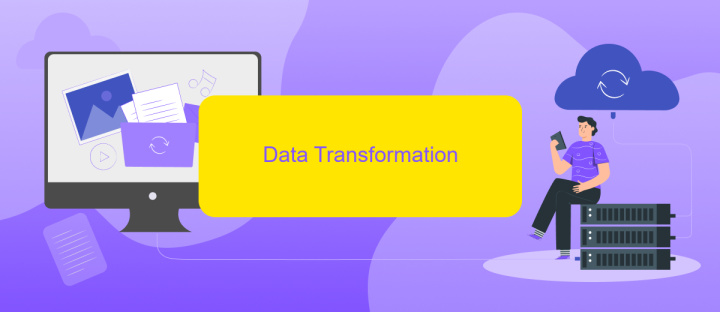What is Data ETL
Data ETL (Extract, Transform, Load) is a fundamental process in data management and integration. It involves extracting data from various sources, transforming it into a suitable format, and loading it into a target system for analysis and decision-making. This article explores the intricacies of ETL, its importance in modern data workflows, and how it enables businesses to harness the power of their data effectively.
Introduction
Data ETL (Extract, Transform, Load) is a crucial process in data management that involves extracting data from various sources, transforming it into a suitable format, and loading it into a target system for analysis and decision-making. This process ensures that data is accurate, consistent, and usable for business intelligence and analytics.
- Extract: Collecting data from diverse sources such as databases, APIs, and flat files.
- Transform: Cleaning, enriching, and converting data into a unified format.
- Load: Inserting transformed data into a data warehouse or other storage systems.
Efficient ETL processes are essential for organizations to leverage their data effectively. Tools like ApiX-Drive simplify the integration of various data sources, automating the data extraction and loading processes. By using such services, businesses can focus more on data analysis and less on the technicalities of data integration, ensuring a seamless flow of information across their systems.
Data Extraction

Data extraction is the initial phase of the ETL process, where raw data is collected from various sources. These sources can range from databases, APIs, and flat files to web services and cloud storage. The primary goal is to gather all relevant data in a structured format, ensuring that it is ready for the subsequent transformation and loading stages. Effective data extraction involves understanding the data's origin, format, and any potential challenges, such as incomplete or inconsistent data.
Modern tools and services, such as ApiX-Drive, simplify the data extraction process by providing seamless integrations with numerous platforms. ApiX-Drive allows users to set up automated workflows that can pull data from various sources without the need for extensive coding or manual intervention. This not only saves time but also reduces the risk of errors, ensuring that the extracted data is accurate and reliable. By leveraging such tools, organizations can streamline their ETL processes and focus more on analyzing and utilizing the data effectively.
Data Transformation

Data transformation is a critical step in the ETL (Extract, Transform, Load) process, ensuring that raw data is converted into a format suitable for analysis. This step involves cleaning, structuring, and enriching data to meet specific business requirements and to ensure consistency and accuracy.
- Data Cleaning: This involves removing duplicates, handling missing values, and correcting errors in the data to improve quality.
- Data Structuring: Transforming data into a structured format, such as tables or databases, to make it easier to analyze and query.
- Data Enrichment: Adding additional information to the data, such as appending external data sources, to provide more context and insights.
Using tools like ApiX-Drive can significantly streamline the data transformation process. ApiX-Drive offers seamless integration capabilities, allowing businesses to connect various data sources and automate the transformation tasks. By leveraging such services, organizations can ensure that their data is not only accurate but also readily available for real-time analysis, thus driving more informed decision-making.
Data Loading

Data loading is the final step in the ETL (Extract, Transform, Load) process, where transformed data is moved into a target system, typically a data warehouse or a database. This step is crucial for ensuring that the data is readily available for analysis and reporting.
The process of data loading can be executed in several ways, depending on the requirements and architecture of the system. It can be done in real-time, where data is loaded continuously, or in batches, where data is loaded at scheduled intervals. The choice between these methods depends on the nature of the data and the needs of the business.
- Full Load: Involves loading all data from the source to the target system.
- Incremental Load: Only new or updated data is loaded, reducing the load time and resource usage.
- Real-time Load: Data is loaded as soon as it is available, ensuring up-to-date information.
Integrating data loading processes can be streamlined using services like ApiX-Drive, which facilitate seamless data transfer between various platforms and systems. By automating these processes, businesses can save time and reduce the risk of errors, ensuring data integrity and consistency.
- Automate the work of an online store or landing
- Empower through integration
- Don't spend money on programmers and integrators
- Save time by automating routine tasks
Benefits of Data ETL
Data ETL (Extract, Transform, Load) is a crucial process for businesses seeking to manage their data effectively. One of the primary benefits of Data ETL is the ability to consolidate data from multiple sources into a single, unified view. This allows organizations to make more informed decisions by analyzing comprehensive datasets. Additionally, the transformation step ensures that data is cleaned and formatted consistently, which improves data quality and reliability.
Another significant advantage of Data ETL is the automation of data workflows, which saves time and reduces the risk of human error. Tools like ApiX-Drive facilitate seamless integration between various platforms and services, making it easier to set up automated ETL processes without requiring extensive technical knowledge. This not only streamlines operations but also allows businesses to respond quickly to changing data needs, enhancing overall efficiency and productivity.
FAQ
What is ETL in data processing?
Why is ETL important?
What are the main steps involved in ETL?
How can ETL processes be automated?
What challenges can arise during ETL processes?
Apix-Drive is a simple and efficient system connector that will help you automate routine tasks and optimize business processes. You can save time and money, direct these resources to more important purposes. Test ApiX-Drive and make sure that this tool will relieve your employees and after 5 minutes of settings your business will start working faster.


